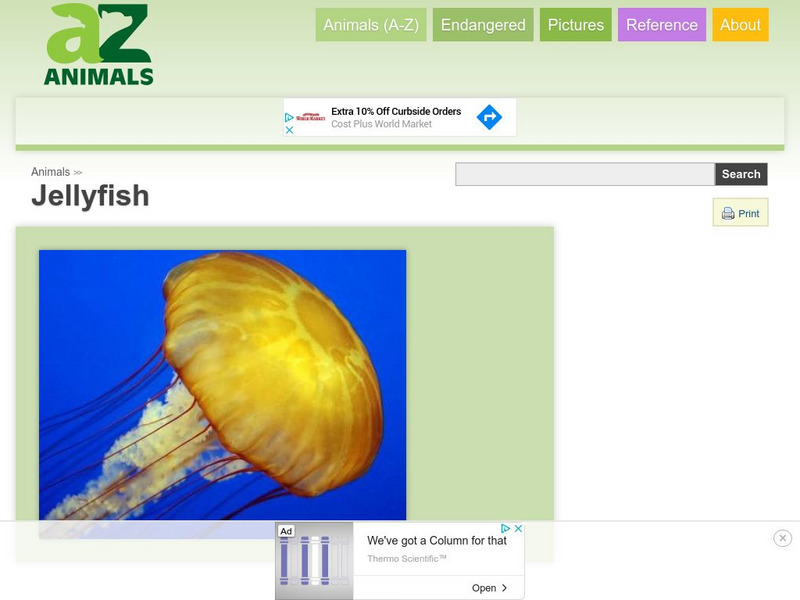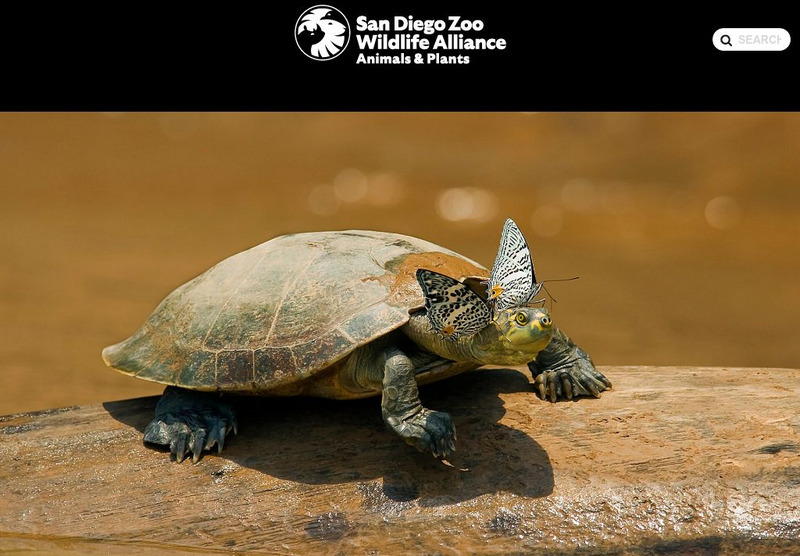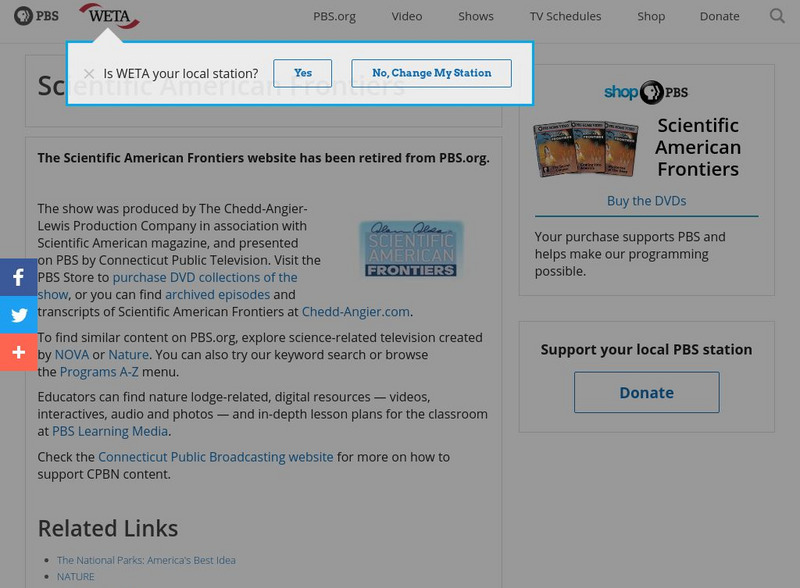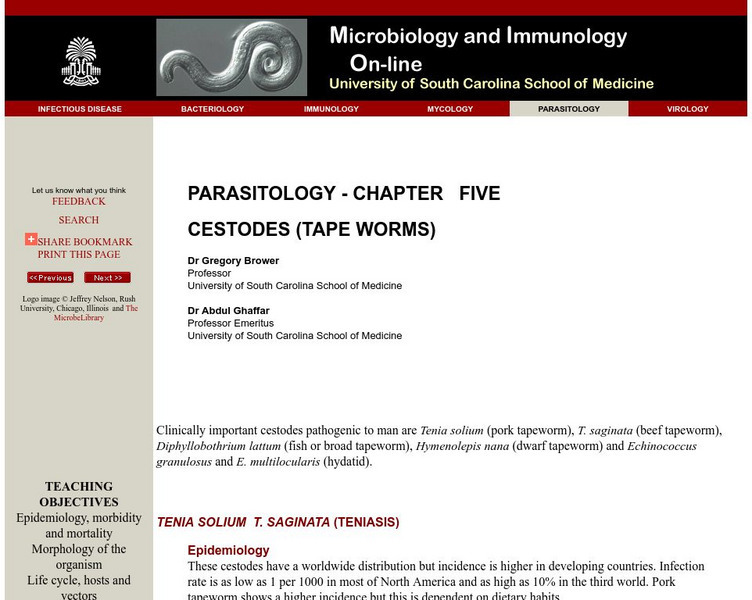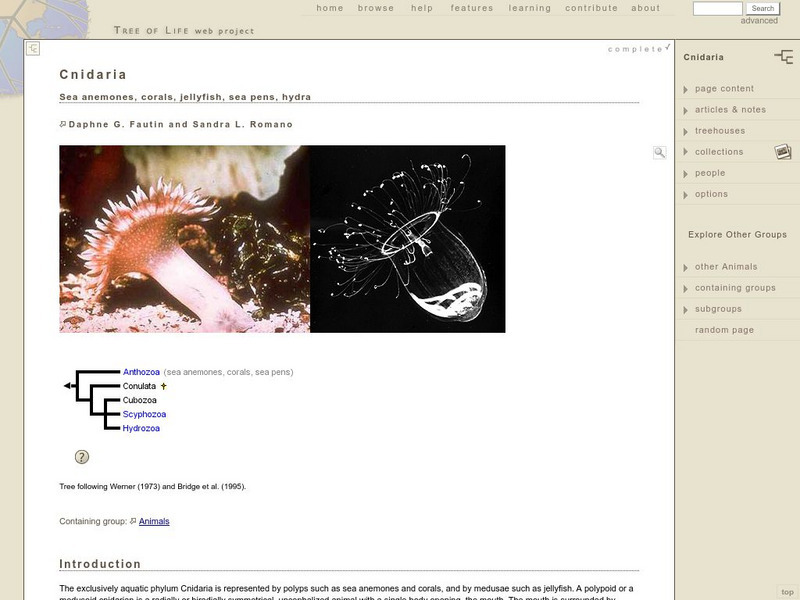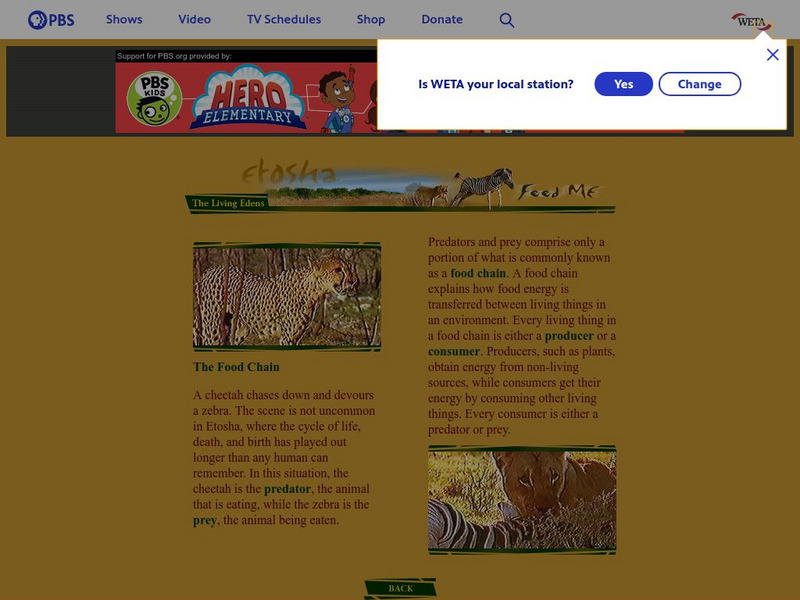Other
Science4 Us: Animals
In online and offline activities, students broaden their understanding of animals by learning to identify and classify animals into six categories: mammals, birds, fish, amphibians, reptiles, and invertebrates.
PBS
Pbs Learning Media: Life Stages Cards: Frog, Butterfly, and Dragonfly
All animals develop and grow over time. The animals in this document undergo one of the most dramatic developmental processes known, metamorphosis. See if you can place the developmental stages in their proper order.
E-learning for Kids
E Learning for Kids: Science: Hawaii: What Are the Life Processes in Animals?
Kamoku is a boy from Hawaii who is interested in the seven life processes. Do you know what these are? Join Kamoku and discover them with him.
Alabama Learning Exchange
Alex: What Is Alive?
This lesson is the opening lesson for a unit of study entitled "Why Doesn't A Caterpillar Grow Up To Be An Oak Tree?" during which learners take a look at life cycles of plants and animals. This lesson will encourage students to explore...
University of Florida
Florida Museum of Natural History: Animals 2: Insects and Spiders
This teacher's guide focuses on the smaller animals that inhabit our world: insects and spiders. These fascinating creatures provide young children many hands-on opportunities to learn about the diversity of living things, how living...
A-Z Animals
A Z Animals: Animal Facts: Jellyfish
Learn about the amazing jellyfish: understand the basic facts of its life, physical structure, habitat, diet, enemies, and more. Colorful photos are included.
San Diego Zoo Global
San Diego Zoo: Beetle
Quick facts, fun facts, interesting facts, and photo bytes are part of this comprehensive site.
San Diego Zoo Global
San Diego Zoo: Turtle and Tortoise
This resource provides detailed information about turtles and tortoises, as well as several pictures and an audio clip.
PBS
Pbs Teachers: Scientific American: Life's Little Questions: Can You Beat Jet Lag
Explore the human body's need for a normal cycle of dark and light and apply this to an understanding of biological clocks in other animals. Test the effect of light on the development of mealworm larvae into adults.
Canadian Museum of Nature
Canadian Museum of Nature: Peary Caribou
Get to know the Peary Caribou.. colored photos, description, life cycle, map of habitat, food. Only the basic details of this animal are given, making it a perfect site for younger researchers.
San Diego Zoo Global
San Diego Zoo: Butterflies
An in-depth description of butterflies, with information about their classification, appearance, habitat, adaptations, reproduction, diet, and other interesting facts. Also includes pictures. [3:17]
Other
Parasitology: Chapter Five: Cestodes
An exhaustive look at numerous types of tapeworms that infect different animals. The site contains numerous pictures and life cycle diagrams. There are links to lectures and additional websites.
Tree of Life Project
Tree of Life: Cnidaria (Coelenterata)
TThis site from the University of Arizona has a discussion of Cnidaria and their reproductive cycles and capabilities.
PBS
Pbs: The Living Edens: The Food Chain
PBS site provides some basic information on the food chain.




